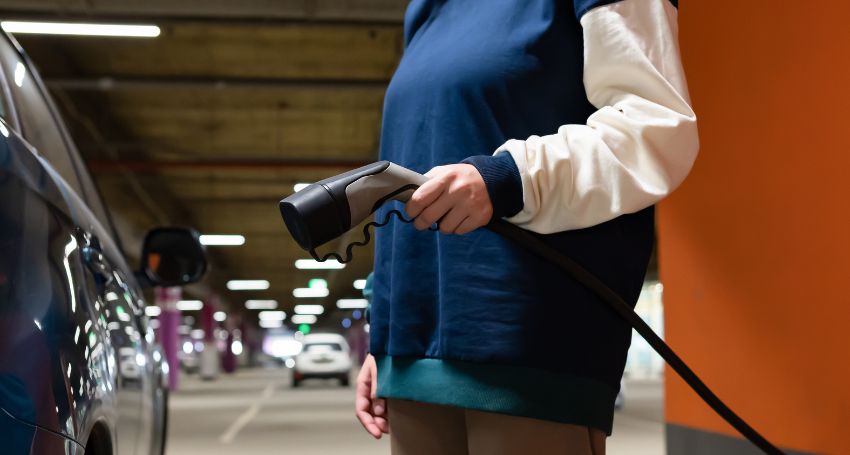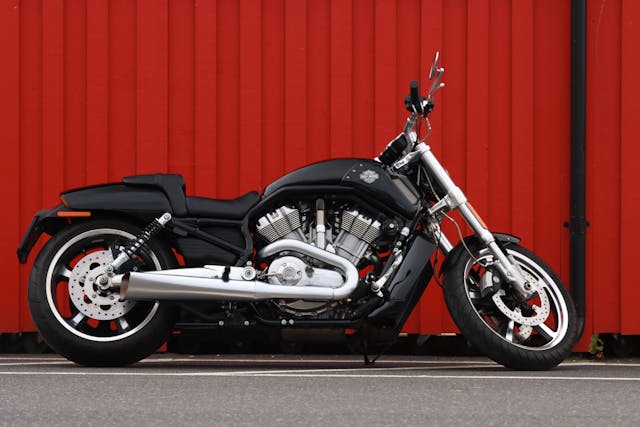
Electric cars are becoming more popular every year, but one question keeps coming up—is it safe to drive an electric vehicle in the rain or charge your EV during wet weather? This article dives into that concern, breaking down the facts and busting the myths. From driving an electric car in heavy rain to charging your EV safely in a thunderstorm, you’ll find real-world answers backed by technology, design, and EV expert insights.
Whether you’re a seasoned EV driver or just starting your research, this guide covers what you need to know about how electric cars are built to operate in a wide range of weather conditions. Let’s get into it.
Are Electric Cars Safe to Drive in the Rain?
Yes, electric cars are designed to protect drivers and passengers even in heavy rain. EVs like the Audi e-tron and Audi Q8 are rigorously tested to meet safety requirements for water resistance. That means they’re built to operate safely even when conditions get wet.
The electrical system of an EV is completely sealed and insulated, preventing water from interfering with components. You won’t get an electric shock from simply driving through rain or wet roads. Electric car drivers can feel confident knowing modern EVs are safe to drive in most everyday weather conditions.
Can You Charge an EV in the Rain or Snow?
Yes, it is safe to charge your EV even during rain and snow. Both the charging stations and chargers are weatherproof and designed to operate in a wide range of weather conditions. So whether you’re plugging in during a drizzle or snowfall, you can charge safely.
EV chargers, including Level 2 and DC fast chargers, come with multiple safety layers. These prevent electric shock by automatically stopping the flow of power if a ground fault or short circuit is detected. This means the electrical connection between your vehicle and the charger is well-managed—rain or shine.
How Are EVs Designed to Handle Wet Conditions?
Modern EVs are designed to operate in various weather conditions, including wet conditions. Key vehicle components like the battery pack, electric motor, and charging port are insulated and shielded against water intrusion.
Not only are these systems sealed, but they’re also similarly insulated to high-end electronics used in aerospace or industrial applications. Manufacturers follow strict testing and standards set by the Society of Automotive Engineers (SAE), making sure EVs function safely in wet or cold environments.
Is It Safe to Drive an EV Through Deep Puddles or Flood Water?
Driving through deep puddles, flooded areas, or standing water always carries some risk—regardless of vehicle type. However, many EVs like the Audi e-tron have a maximum wading depth of 500mm, meaning they can safely wade through water up to that level.
Still, driving through deep or completely flooded areas can damage the battery or other components if the vehicle gets submerged. It’s always important to drive with caution and exercise caution when navigating flood water or areas after a rainstorm.
What Happens If Water Gets Into the Charging Port?
EV charging ports are designed with weatherproof covers and fail-safe features. If you forget to close the port, charging equipment is built to handle some exposure without failure. That said, charging your car in a thunderstorm or while submerged in deep water is never recommended.
The plug and charger connections are made so that electricity only flows once a secure, dry connection is detected. That helps ev charging remain safe to charge, even when it’s charged in the rain.
Do Electric Vehicles Have Safety Systems for Wet Roads?
Absolutely. EVs are equipped with advanced safety systems like traction control, braking control, and regeneration to give you better stability on slippery surfaces. This technology helps prevent hydroplaning and improves handling on wet or icy roads.
Because EVs have a lower centre of gravity, they often perform better in wet conditions than combustion vehicles. Electric cars are designed with systems that automatically adjust to road conditions, making them safe to drive even during storms.
How Do EV Batteries Hold Up in Rainstorms or Heavy Rain?
EV batteries are tightly sealed in protective casings. During heavy rain or stormy weather, there’s no risk of the battery pack being exposed. These systems are protected against dust and water ingress, and tested with high-pressure water jets to simulate real-world weather conditions.
EVs are also designed with charging infrastructure that keeps EV batteries safe while parked or charging. So, rain may splash, but it won’t damage the battery or cause a collision or short circuit.
Can Rain Affect EV Charging Infrastructure or Stations?
Public EV charging stations are built to operate safely in various weather conditions, including rain and snow. The stations are designed to protect users with insulated charging points, and any issues in the electrical connection will shut down power automatically.
Whether you’re using a home wall charger or a public charging station, you can charge your EV without concern—even during a rainstorm. These systems are created with input from organizations like the Environment Agency and are built to endure wet conditions safely.
Standards and Tests Electric Vehicles Must Meet
All EVs must meet rigorous safety requirements before they hit the road. That includes tests for water damage, electrical system failure, and extreme weather conditions. Vehicles like the Audi Q8 e-tron are rigorously tested to handle everything from deep water to snow.
These tests are conducted under standards set by the Society of Automotive Engineers and international safety bodies. Vehicles that pass can operate safely in environments that include rain, snow, puddles, and even driving in standing water.
Tips for Driving Electric in Rain and Snow
While EVs are safe in the rain, EV owners should still take a few precautions:
- Check the tread depth on tires to avoid slipping or hydroplaning.
- Avoid flooded areas and deep puddles whenever possible.
- Slow down and allow more space for brake distance.
- Keep the plug and charging station dry before connecting.
- Use regenerative braking cautiously to avoid wheel lock-up on icy roads.
- Be mindful of high-voltage components when performing maintenance.
EVs don’t just run well in wet weather—they’re built for it.
Final Thoughts
Electric vehicles are designed to handle wet weather conditions safely, from heavy rain to snow and even puddles. With sealed electrical systems, weatherproof charging stations, and advanced traction control, EVs are just as safe—if not safer—than traditional gas-powered cars in the rain. As long as you follow basic safety precautions, such as avoiding deep floodwaters and ensuring a dry charging connection, you can drive and charge your EV with confidence in any weather. So, whether you’re commuting during a drizzle or charging after a storm, rest assured that modern EV technology has you covered.
If you’re considering switching to an electric vehicle, now is a great time to explore the benefits. Stay informed, drive smart, and enjoy the efficiency and innovation that EVs bring to the road—rain or shine!



